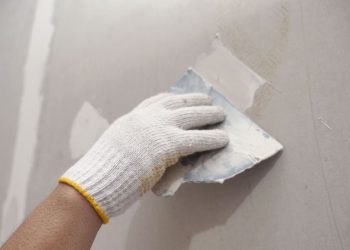Wildfires have become increasingly common in Western states, but they can and do happen in other regions. A fire can also start with an accident at a neighbor’s house, an explosion, a car crash or some other type of event.
Once a fire starts, it can spread quickly and engulf buildings nearby. Getting rid of flammable materials and objects in your yard can reduce the risk that your house will go up in flames if a fire starts at another location and spreads.
Focus on the Area Near Your House
Eliminate flammable materials from an area about five feet around your house. Clean your gutters to get rid of dry leaves, sticks and other debris that could catch fire. Gutter guards can keep a lot of debris out of your gutters and reduce the amount of cleanup required.
Remove other organic materials, such as leaves, pine needles and mulch, that could easily catch fire. You can use stone or another flame-resistant material instead of wood or bark mulch. Trim trees near your house to prevent a potential fire from spreading to the roof.
If you store wood to burn in the winter, don’t keep it too close to your house. That may be convenient, but it’s a fire hazard. If a fire starts somewhere else and spreads to your yard, your stack of firewood can go up in flames and your house can soon follow.
Fuel is highly flammable. If you keep gasoline or propane for a generator, lawn mower or other equipment, don’t store it in your garage.
Trash cans and recycling bins can contain all sorts of flammable materials. Keep those containers a good distance from your house.
Clean Up a Broader Area Around Your Home
Once you have removed flammable materials from the space right outside your house, focus on a zone that extends up to 30 feet from your home. Keep the grass trimmed, especially during dry seasons, when it’s more likely to catch fire. Rake leaves, put them in bags and remove them from the property.
Prune trees and shrubs on your property regularly to reduce the risk of fire spreading to your house. Space out trees and bushes to prevent flames from spreading from one plant to another.
Hardscaping features, such as stone walkways, can create breaks that can slow down or stop the spread of a fire. If you don’t currently have hardscaping features in your yard, consider adding some.
Make Fire Prevention an Ongoing Priority
The risk of fire is always present, no matter the time of year. Minimizing your fire risk isn’t the sort of thing you should do once, then forget about. It requires consistent attention.











